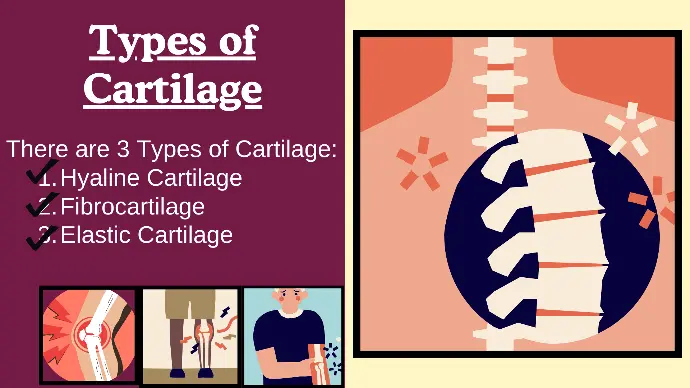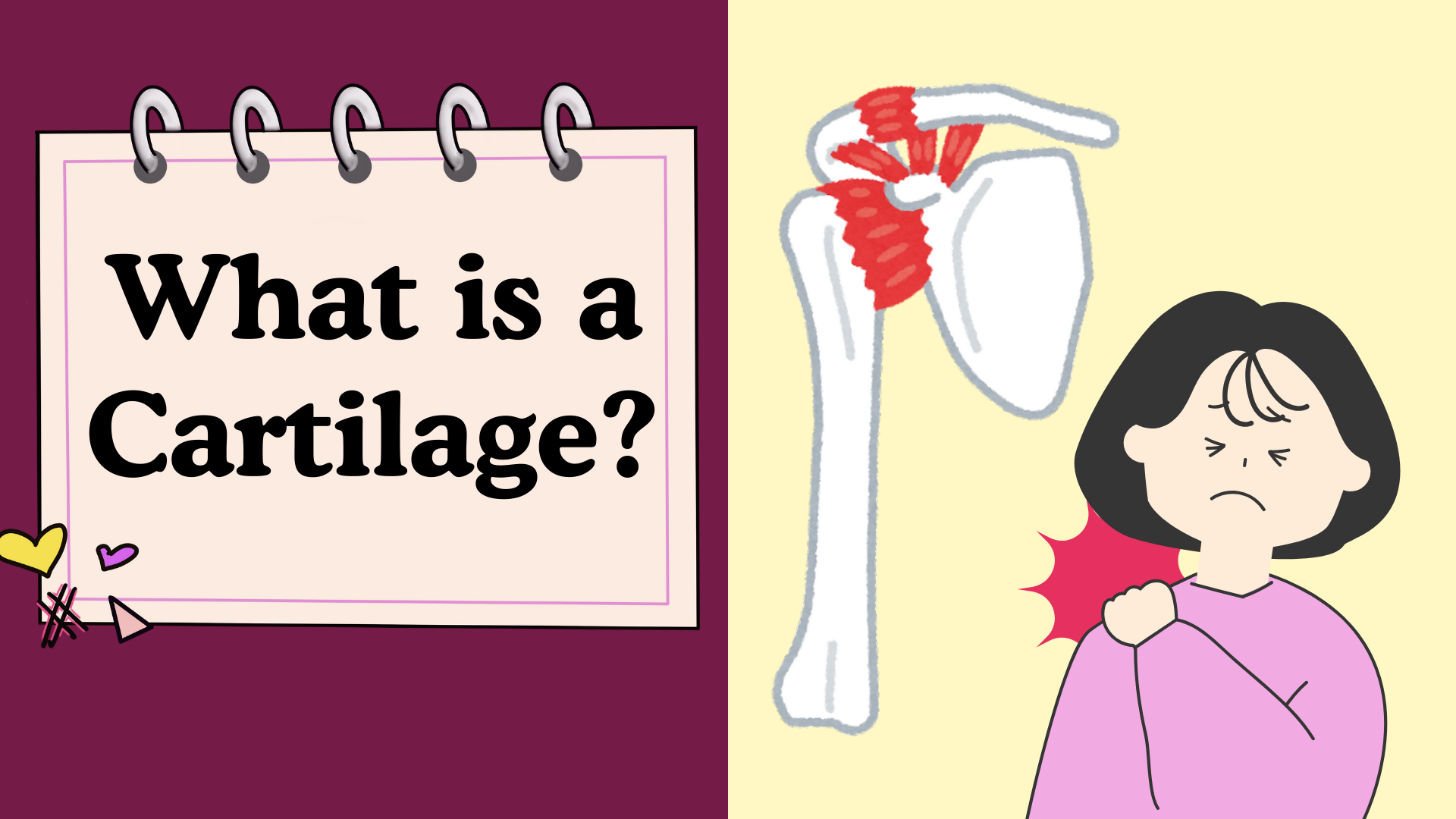Cartilage and Its Types
Cartilage plays a crucial yet often underappreciated role in the human body. Though it makes up a small portion of the human skeleton, its unique properties are essential for the proper functioning of various systems.

What is Cartilage?
Cartilage is a semi-rigid connective tissue that provides strength and flexibility, serving as a shock absorber within the body. Unlike bone tissue, cartilage is not mineralized, making it less rigid but more flexible.

It consists of two main components:
- Cells (Chondrocytes): The living component of cartilage.
- Matrix (Intercellular Substance): The non-living, extracellular part that surrounds the cells.
Blood Supply of Cartilage
One of the most distinctive features of cartilage is its avascular nature—it lacks blood vessels. Because of this, the chondrocytes within cartilage rely on the diffusion of nutrients through the matrix for sustenance. Waste products from these cells also diffuse out in the opposite direction.

Types of Cartilage
There are three primary types of cartilage, each with distinct characteristics and functions:
1. Hyaline Cartilage
Hyaline cartilage is the most common type found in the body. It is strong and capable of providing substantial support, which is why it forms the majority of the embryonic skeleton.
The term "hyaline" comes from the Greek word hyalos, meaning "glassy," referring to its translucent appearance.
Locations of Hyaline Cartilage:
- Costal Cartilage: Connects the ribs to the sternum.
- Nasal Cartilages: Found in the structure of the nose.
- Epiphyseal Cartilages: Growth plates in long bones.
- Articular Cartilage: Covers the ends of bones in joints.
- Respiratory Tract: Reinforces structures like the larynx, trachea, and bronchi.
2. Fibrocartilage
Fibrocartilage combines the strength of hyaline cartilage with the flexibility of elastic cartilage. It is composed of dense regular connective tissue, making it ideal for areas of the body that require both durability and flexibility.
Locations of Fibrocartilage:
- Intervertebral Discs: Cushions between the vertebrae in the spine.
- Pubic Symphysis: The joint between the two halves of the pelvis.
- Menisci of the Knee Joint: Crescent-shaped pads in the knee that absorb shock.
- Joint Sockets: Such as the labrum glenoidale of the shoulder joint and the labrum acetabulare of the hip joint.
3. Elastic Cartilage
Elastic cartilage is distinguished by its high degree of flexibility. This type of cartilage can return to its original shape after being bent or compressed, which makes it crucial for structures that require both shape retention and pliability. It has a yellowish, opaque appearance.
Locations of Elastic Cartilage:
- Auricle (Pinna) of the External Ear: The outer part of the ear.
- Epiglottis of the Larynx: A flap that prevents food from entering the windpipe during swallowing.
- Cartilaginous Part of the Auditory Tube: Connects the middle ear to the nasopharynx.
Conclusion
Cartilage is a versatile and essential tissue that supports various bodily functions, from providing structure to joints to ensuring the flexibility of the ear and respiratory tract. Understanding the different types of cartilage and their functions can deepen our appreciation of this remarkable tissue and its vital role in maintaining our body's integrity and flexibility.